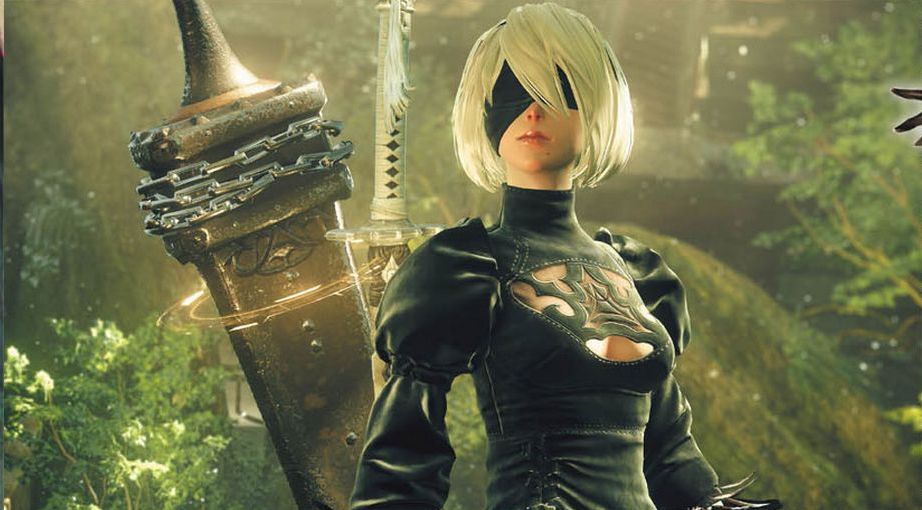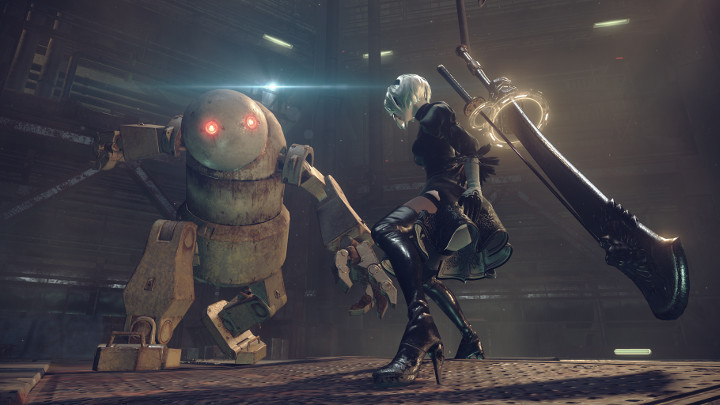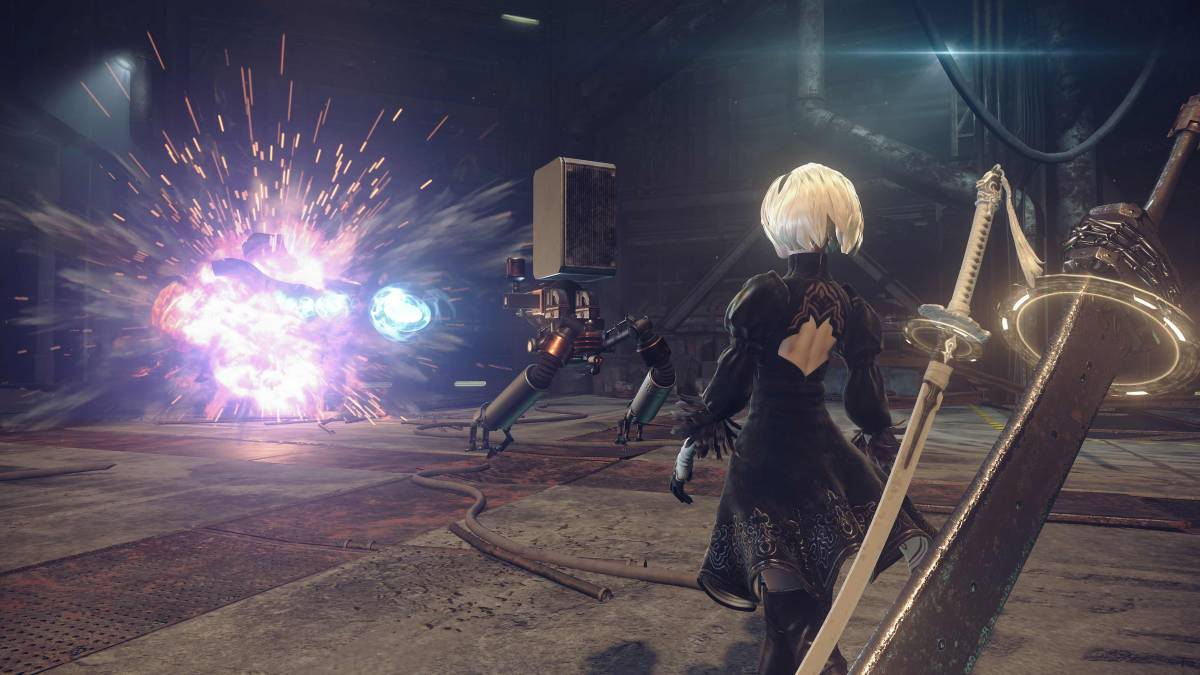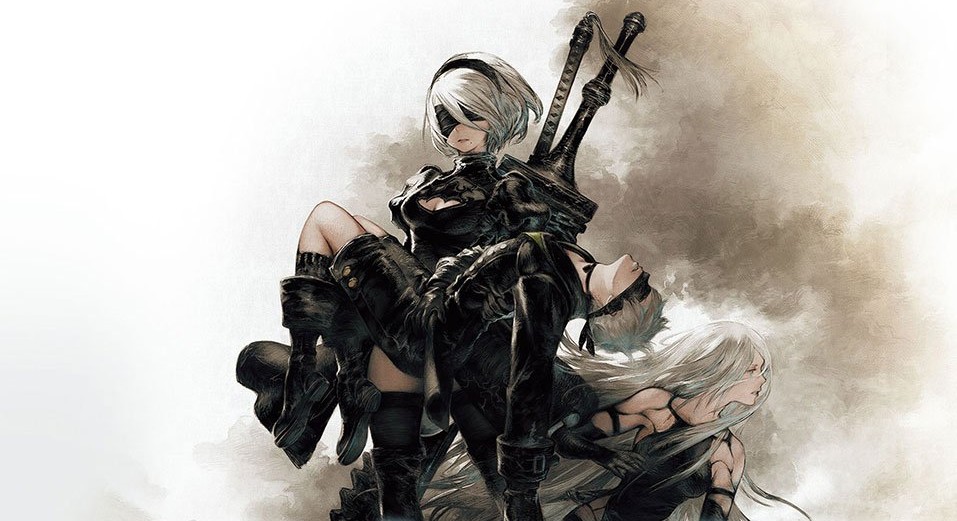It’s been a long and difficult road for many Japanese developers. Changes to the tastes of Japanese gamers coupled with a lack of understanding of western gamers desires have meant game production has been a mixed bag over the last decade. It used to be a case of what was popular on Japanese consoles would be popular on western consoles, but no longer.
Sure, there have been those big landmark releases such as Resident Evil 7 and Final Fantasy XV, and even some cult hits like Deadly Premonition and No More Heroes. But Japanese developers’ first duty is to the Japanese consumer and unfortunately for us that leads to low sales and in turn, developers have had to diversify and change tactics to remain alive.
It can be easy for developers to take less chances and cater to a western audience. I’m glad to see on this occasion that Platinum Games have stuck to their guns and brought us a game that is quintessentially Japanese.
Nier: Automata is their latest effort, which will explain a lot to certain gamers as their games often have a very Japanese-y feel to them. Platinum’s games have been a mixed bag in terms of quality; for every Bayonetta they’ve had a The Legend of Korra. Sales have been a similar issue, but that’s been the case across the board with gaming developers of late. Platinum Games have rather smart and knowingly made games that they realise will sell -such as Metal Gear Rising and Transformers: Devastation- so they can make the games they want to make, like Vanquish and The Wonderful 101. That being said, Platinum are known for being makers of high quality games, but not necessarily high selling games. So how are they going to fare producing a sequel to an underselling and somewhat forgotten 2010 game?

I heard someone describe Nier: Automata as ‘bonkers’, and I must admit I felt a little insulted. Sure it has its own style but that’s no reason to call it bonkers. Then I realised it wasn’t about Nier’s style or content, it was the whole package; the feel, the pace, the design. So maybe it is a little bonkers. At first I played the tutorial level of Nier, which is also the demo for the game. A word of warning: the demo does not give you the best idea of how Nier actually plays. While it is very good at teaching you the game, its mechanics and different play styles, it does not prepare you for the rest of the game. I felt a little underwhelmed following the tutorial. So imagine my surprise when the game quickly evolved from what looked to be a level-based mission style game, to a large open world action RPG.
Automata has a plot that I’ll admit isn’t the easiest to follow, but it sure does have depth. It largely follows the plot of androids 2B and 9S, as they are sent to Earth to assist the resistance who stand against evil robot forces who have outcast the human race to the moon. There are a number of playthroughs to Nier, each one focussing on a different aspect of the story, the second focusing on the plot of 2B’s ‘sidekick’ 9S. This gives the game much more scope, and that’s without taking into account all the side missions. It’s certainly different to some of the usual dross you seem to get these days, but I can imagine it may leave some gamers out in the cold.
Within the first hour, we are treated to four different play styles. The game switches from scrolling shooter to twin stick shooter to 2.5D hack and slash platformer to free form, three dimensional hack and slash RPG. Back in the 80s and 90s, games would often swap from genre to genre without a thought, but in 2017 this just doesn’t happen. To be honest, I’m not a fan of either twin stick shooters or scrolling shooters, but I found both of these sections pretty good. I had not played a scrolling shoot-em-up for many years (they were big back in my day) and while I’m not about to jump up and down until I get a new version of Space Harrier, I rather enjoyed that retro throwback feeling.

Automata’s fighting is frenetic and wild. You can always run the risk of making combat too fast-paced, meaning it ends up confusing and frustrating. Nier manages to avoid this pitfall. Combat is tense, quick and satisfying. It has a similar style to that of many other games, you face up against a number of enemies at once and each enemy has a ‘tell’, meaning they’re about to attack. Many modern games use a parry to allow you to counter attack. Nier doesn’t, it instead encourages you to dodge these assaults with a slide-y style manoeuvre. Those who have also played Platinum’s other titles may feel as I do that the slide is not too dissimilar to the slide into cover from Vanquish. Eventually you’ll learn not to even use the tells, altering your position every few seconds to gain a better advantage over your opponents.
The combat is complex but simple to learn, within the first couple of hours you’ll have the mechanics down, seamlessly stringing together combos against multiple enemies, switching between close and ranged combat with ease. However, it’s not all plain sailing, as with any other game these days, the camera can be an issue. It’s been over 20 years since gaming truly came to the third dimension, and while there have been major advancements in this area, many games still suffer from troublesome cameras. Nier is no different. The camera isn’t bad, but with fights being so fast with so many enemies and the need to adjust position and dodge frequently, it is to be expected that the camera sometimes struggles to keep pace, and you can end up taking a big metal fist to the face totally unexpectedly off camera. It didn’t take anything from the experience, but it was a minor niggle.
Nier: Automata is hard, but not difficult. To explain, Dark Souls is not hard, Dark Souls is difficult. Dark Souls is difficult to play in a similar fashion that Resident Evil 2 is difficult, because of the mechanics. Dark Souls leans heavily on long animation sequences, dated mechanics and long health bars to make it hard. But that doesn’t make the game hard, it makes it hard to play. I understand that mastering a game such as Souls is something to be appreciated. Nier is hard, but generally has spot on reactions and (usually) good mechanics. Now, Nier’s overworld won’t cause you too much issue generally, though its boss battles are a different matter entirely. They can be long and varied, so it’s important that even though the game is super quick, you need to pick your attacks carefully. With the fact that you’ll find yourself back a save point and not at the start of the fight, it means you’ll want to think twice about each engagement, but not too much; second guessing yourself will cost you.
Despite my comments about Dark Souls earlier, there are a few times when Nier’s mechanics let the game down. During one boss battle, the game switches from hack and slash to twin stick shooter. But for reasons I can’t fathom, the game focusses in close on the player (2B), meaning you can’t actually see who is attacking you. All you can do is shoot blindly off screen and try to avoid any attacks that come at you last minute, jumping over shock-waves and avoiding sound pulses. I can only guess that this was added merely to make the gameplay harder in this section, but personally I feel that if my in game character can see a target, so should I. There’s a couple of other sections which have similar issues, like the camera pulling back quite far to give an artistic view of a bridge fight, but it just makes the fight difficult to see and hard to dodge attacks. I feel these techniques of making a game more difficult cheapens the experience.
It’s important to remember that Automata does not have an autosave feature, so no rage-quitting for you. The game even warns you that it does not auto-save, much to the chagrin of a number of people bitching on social media that they died and have to do a huge chunk of game over again. Oddly, I rather enjoyed this aspect of the game. At one stage, I perished while fighting a boss (I had missed a save point on the way) and had to make the sizeable journey all the way back to the punishing battle. Save points are located generously throughout the game world however and also pride map information and allow you to travel between said points.
The music is wonderful; traditional, yet futuristic. There’s all sorts of musical influences at play here – the soundtrack has elements of classic Italian guitar riffs, mixed with Arabian sounds and Japanese trance style, akin to that of Ghost in the Shell. There’s plenty to enjoy and it suits the game completely, perfectly encapsulating a blend of action and the beauty and desolation of Nier’s lost world. The character design is also very well done. 2B looks like she could be a character in a number of futuristic anime, but also her costume is designed to feel very relevant in Japanese society. It would not be unexpected to see someone wearing similar dress in Harajuku or maybe even Akihabara.

The game world of Nier: Automata is gorgeous: the ruined Earth looks amazingly well realised. Graphics wise, I didn’t notice any glitches as such. During my early time with the game, I felt the colours looked a little washed out. Later I would find out that this was a deliberate artistic decision. Nier’s colours become more or less vivid dependent on what is happening at that point in the game; standing out with immensely intense colours at times, and at most right down to monochrome. Enemy design is wonderful and they often look so cute I feel bad killing them, but I still did. The bosses, however, are easily the most impressive. My favourite being the boss in the theme park, appearing to wear a large metal and material ball gown with the bodies of dead androids hanging off it.
All in all, Nier: Automata is an outstanding title, though there are a few niggles here and there. For instance, despite the transport system, there is a fair bit of backtracking. Also the game style and design may not be to all western gamers’ tastes: it may be a very ‘Japanese’ game, but it is not unapproachable. I encourage you to try Nier: Automata. It’s unique and quirky, dark and exciting. It’s a challenge but not one so hard to put you off trying one last time.
PS4 copy provided by PR
Some of the coverage you find on Cultured Vultures contains affiliate links, which provide us with small commissions based on purchases made from visiting our site.

